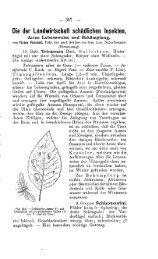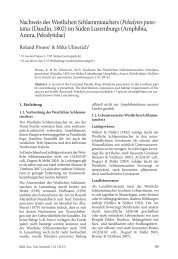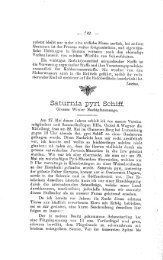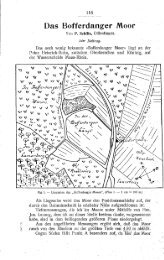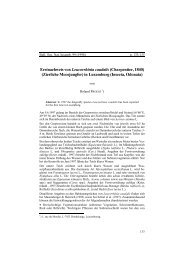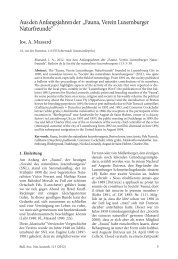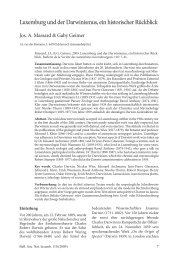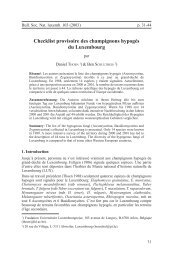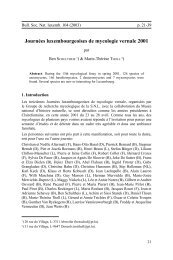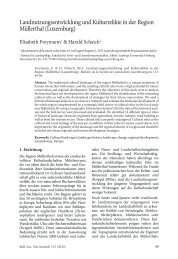Four new lichen-associated Trimmatostromaspecies ... - SNL
Four new lichen-associated Trimmatostromaspecies ... - SNL
Four new lichen-associated Trimmatostromaspecies ... - SNL
You also want an ePaper? Increase the reach of your titles
YUMPU automatically turns print PDFs into web optimized ePapers that Google loves.
Amongst the <strong>new</strong> species described here, T.<br />
quercicola is macroscopically rather distinct,<br />
as conidial chains are easily visible at a strong<br />
magnification (× 40), appearing as an irregular,<br />
branched net of relatively thick hyphae<br />
overgrowing the substratum. Microscopically,<br />
the species has much thicker conidial<br />
chains than the three others. It is chemically<br />
distinct from T. lecanoricola by the K+ olivaceous<br />
conidial chains and differs slightly from<br />
T. dendrographae in having brown conidia (in<br />
water) without a distinct olivaceous tinge.<br />
Trimmatostroma quercinum (Hoffm.) Höhn.<br />
(syn. Phragmotrichum quercinum Hoffm.)<br />
was described from rotten manufactured<br />
wood of Quercus in Germany. The species<br />
forms black, superficial, dispersed, orbicular,<br />
pulvinate stromata, and oblong, muricate,<br />
transversally septate to irregularly<br />
muriform, indistinctly catenate conidia<br />
25–30 × 12–15 μm (Migula 1921, Sutton &<br />
Pirozynski 1965). Although the type of this<br />
species has never been restudied and the<br />
species never been reported after its original<br />
description, it seems to differ clearly from<br />
the <strong>new</strong> T. quercicola by the pulvinate, stromatic<br />
conidiomata, the different ecology<br />
(rotten wood, versus bark of Quercus) and<br />
the mostly larger conidia.<br />
Ecology, hosts and distribution: The <strong>new</strong><br />
species is known from two collections on<br />
the bark of old Quercus. As conidiophores<br />
at least occasionally overgrow and possibly<br />
parasitize reduced <strong>lichen</strong> thalli, the species<br />
may be considered as facultatively <strong>lichen</strong>icolous.<br />
It is probably widespread, but overlooked<br />
in similar habitats, and currently<br />
known from Belgium and Luxembourg.<br />
Additional specimen examined: Belgium, SE of<br />
Buzenol, on bark of Quercus, possibly <strong>associated</strong><br />
with sterile crustose <strong>lichen</strong>s, 19 June 1984, P. Diederich<br />
5576 (herb. Diederich).<br />
Fig. 4. Trimmatostroma quercicola (holotype). A, Conidiophores with and without conidia. B, Plagiotropous conidial<br />
chain. C, Conidia. Scale bar = 10 µm. U. Braun del.<br />
Bull. Soc. Nat. luxemb. 111 (2010) 53



